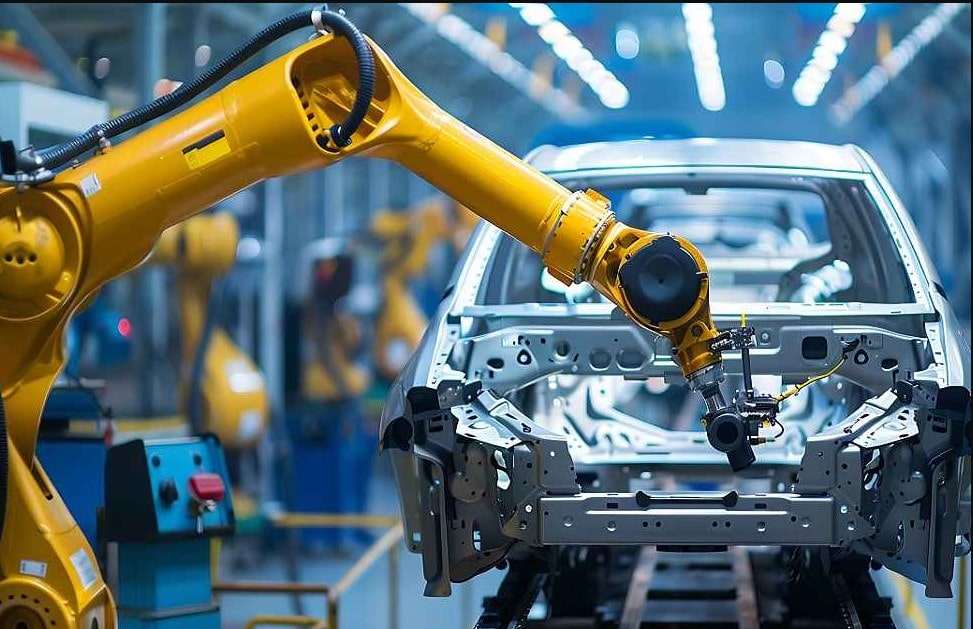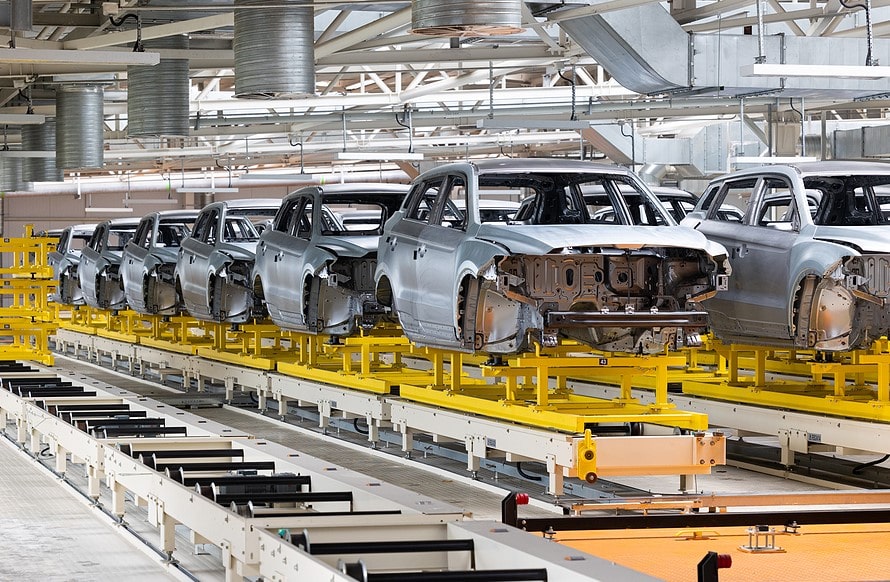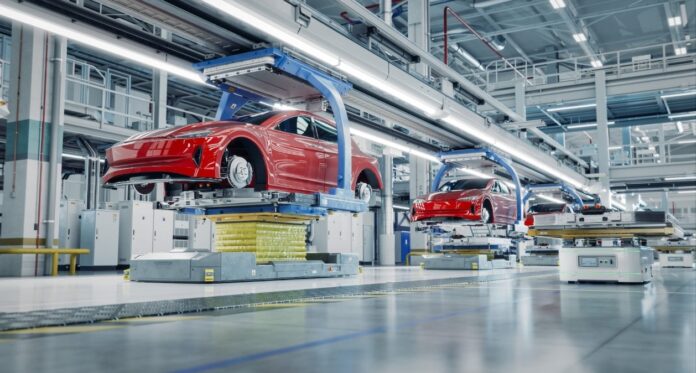The Automotive Industry technology known as augmented reality improves the user’s view of their environment by superimposing digital data—such as sounds, pictures, or interactive elements—onto the physical world. Users are able to experience a real-time fusion of the virtual and physical worlds using gadgets such as tablets, smartphones, and augmented reality glasses. Augmented reality has uses in a variety of fields, including design, gaming, education, healthcare, and retail. AR, for instance, may be used to provide immersive gaming experiences, support surgeons with real-time data during surgeries, or perceive furniture in a space. Augmented reality is far more adaptable and captivating than virtual reality (VR) since it augments reality without completely replacing it.
Augmented in design processes Automotive Industry

By allowing designers to see ideas in three dimensions, augmented reality is transforming the automotive design sector and facilitating faster iterations and changes. By enabling teams to project designs onto physical models or real-world situations, augmented reality systems promote innovation and ease of cooperation across geographical boundaries.
Without the need for expensive physical models, stakeholders may engage with prototypes, generating instant feedback loops that expedite decision-making. Additionally, augmented reality makes it possible to create immersive presentations that clearly bring designs to life and attract potential investors more successfully than traditional techniques.
By using augmented reality, manufacturers may save costs and accelerate time to market while improving car aesthetics through dynamic visualization and teamwork.
Wearable technology known as Augmented Reality glasses projects digital material, including text, photos, and 3D models, onto the user’s field of vision. These glasses’ cameras, sensors, and screens enable seamless interaction between virtual and real-world objects. Real-time data visualization, gaming, hands-free work support, and navigation are among the frequently used applications. Magic Leap and Microsoft HoloLens are well-known examples. Because AR glasses incorporate technology into the user’s surroundings, they increase creativity and productivity.
Enhancing Customer Interactions with Augmented Reality
Augmented Reality is revolutionizing customer interactions within the automotive, providing innovative solutions that enhance the buying experience. Here’s how augmented reality is reshaping virtual showrooms and test drives:
Virtual Showrooms
Virtual showrooms are made possible by augmented reality technology, which lets prospective purchasers view cars from the comfort of their homes. Imagine an online store where customers can:
Examine Vehicles in Detail: Users may zoom in to observe fine features and view autos from all angles. This realistic experience simulates going to a dealership in person.
Interactive Features: Augmented Reality By showing everything from color selections to interior plans, this hands-on approach encourages deeper engagement and helps buyers envision their choices.
augmented test drives
Test drives, which replicate driving situations in a virtual setting, are revolutionizing augmented reality applications. This has a number of benefits:
Simulated Driving Experiences: Augmented Reality Without having to deal with the hassles of setting up a real test drive, potential buyers may get a sense of what it’s like to drive a car. Through the projection of vehicle dynamics into the user’s environment, augmented reality apps may reveal how the vehicle might respond to different road conditions.
Performance insights: By interacting with the simulation, users may gain an understanding of performance elements including handling, braking, and acceleration. Customers may use this information to make well-informed decisions about how they want to drive the car.
Accessibility and Convenience: Customers may more easily and swiftly examine a variety of automobiles thanks to the ease of augmented reality apps in today’s hectic world.
Enhanced Customer Engagement
The use of augmented reality in the purchasing process enhances interactions as consumer expectations continue to change.
Personalized Experience: The procedure is made more interesting and personalized by the ability to alter cars and replicate driving situations. Consumers are more satisfied when they feel like they have a say in decisions.
Making Informed Decisions: Augmented Reality technology gives consumers interactive access to crucial information, allowing them to assess their alternatives and make certain purchases efficiently.
Innovative augmented reality solutions are driving a major change in the automobile sector toward improved consumer relations. Automotive Industry , captivating, and educational experiences offered by virtual showrooms and augmented reality test drives appeal to today’s tech-savvy customers.
Augmented reality technology will probably become more and more important in determining how consumers interact with automakers as it develops, creating a more engaging and pleasurable purchasing experience.
Streamlining Maintenance Tasks with Augmented Reality

By giving professionals comprehensive, real-time holographic instructions as they work on automobiles, augmented reality is completely changing maintenance chores in the automotive sector. This cutting-edge technology lets mechanics perceive processes and improve their comprehension of difficult jobs by superimposing important information directly onto actual components.
Decreased Downtime and Errors: augmented reality visual assistance walks technicians through every step, reducing downtime and error. This capability is particularly helpful for intricate maintenance and repair jobs.
Improved Training for New Technicians: augmented reality gives new recruits a practical education that enables them to safely practice skills in an interactive setting. This approach reduces the dangers in comparison to conventional training approaches.
Remote Assistance Capabilities: By providing real-time troubleshooting and advice from any place, augmented reality apps allow professionals to assist on-site personnel through live video feeds, speeding up issue resolution.
Better Turnaround Times: The effectiveness of augmented reality integration expedites auto repair. By cutting down on wait times, this efficient method improves customer happiness and boosts productivity.
The Future of Augmented Reality in the Automotive Industry:
Exciting opportunities exist for augmented reality in the automobile sector that might greatly improve driving experiences, safety, and operational effectiveness. The following are some significant forecasts and possible advancements:
Dashboards with Augmented Reality: In the future, cars could have dashboards with augmented reality that display real-time navigation data straight onto the windshield. By enabling drivers to get vital information like speed, directions, and alarms without taking their eyes off the road, this device would increase situational awareness and safety.
Predictive Safety Features: Partnerships between digital firms and automakers are probably going to produce cutting-edge augmented reality applications that use predictive analytics to improve vehicle safety. For example, cars might alert drivers to possible dangers, such as obstructions or people, before they become apparent, allowing for preventative actions to prevent collisions.
Personalized User Experiences: Including adaptable Automotive Industry interfaces may revolutionize how customers engage with automakers. With simple gestures or voice instructions, users may change the temperature and entertainment settings in their cars, making the driving experience more individualized and convenient.
Streamlined Operations for Electric and Autonomous Cars: As electric and autonomous cars proliferate, augmented reality technology can help simplify operations at many levels, from manufacturing lines to customer interactions. augmented reality, for instance, might help customers comprehend the features and maintenance requirements of vehicles or support the virtual training of specialists working on complicated electric drivetrains.
Improved Customer Engagement: Automotive Industry has the potential to transform the way that companies communicate with their clientele completely. Augmented reality may increase consumer happiness and engagement in a variety of applications, such as maintenance apps that walk users through self-service repairs or virtual showrooms that enable immersive automobile research.
A future marked by more inventive production techniques, better driving conditions, and deeper connections between customers and their cars is promised by the combination of augmented reality technology with automotive innovations. These technologies will transform the Automotive Industry as they advance, opening the door for creativity and increased productivity.
Conclusion
Automotive Industry is transforming the automobile sector by improving vehicle maintenance, marketing, and design. It enables producers to see ideas more concretely, which results in creative designs. Through immersive test drives and virtual showrooms, augmented reality is also enhancing consumer relationships.
Automotive Industry Customers will find this convenient, and it also meets contemporary standards. Additionally, by lowering mistakes, improving productivity, and offering vital information during repairs, augmented reality tools significantly support personnel in their work. As businesses investigate augmented reality’s numerous possibilities inside their operations, its adaptability becomes increasingly evident.
The Automotive Industry should anticipate more changes in vehicle contact and ownership experiences as augmented reality technology continues to progress. To remain competitive in the tech-driven economy of today, businesses need to adopt these advancements.




